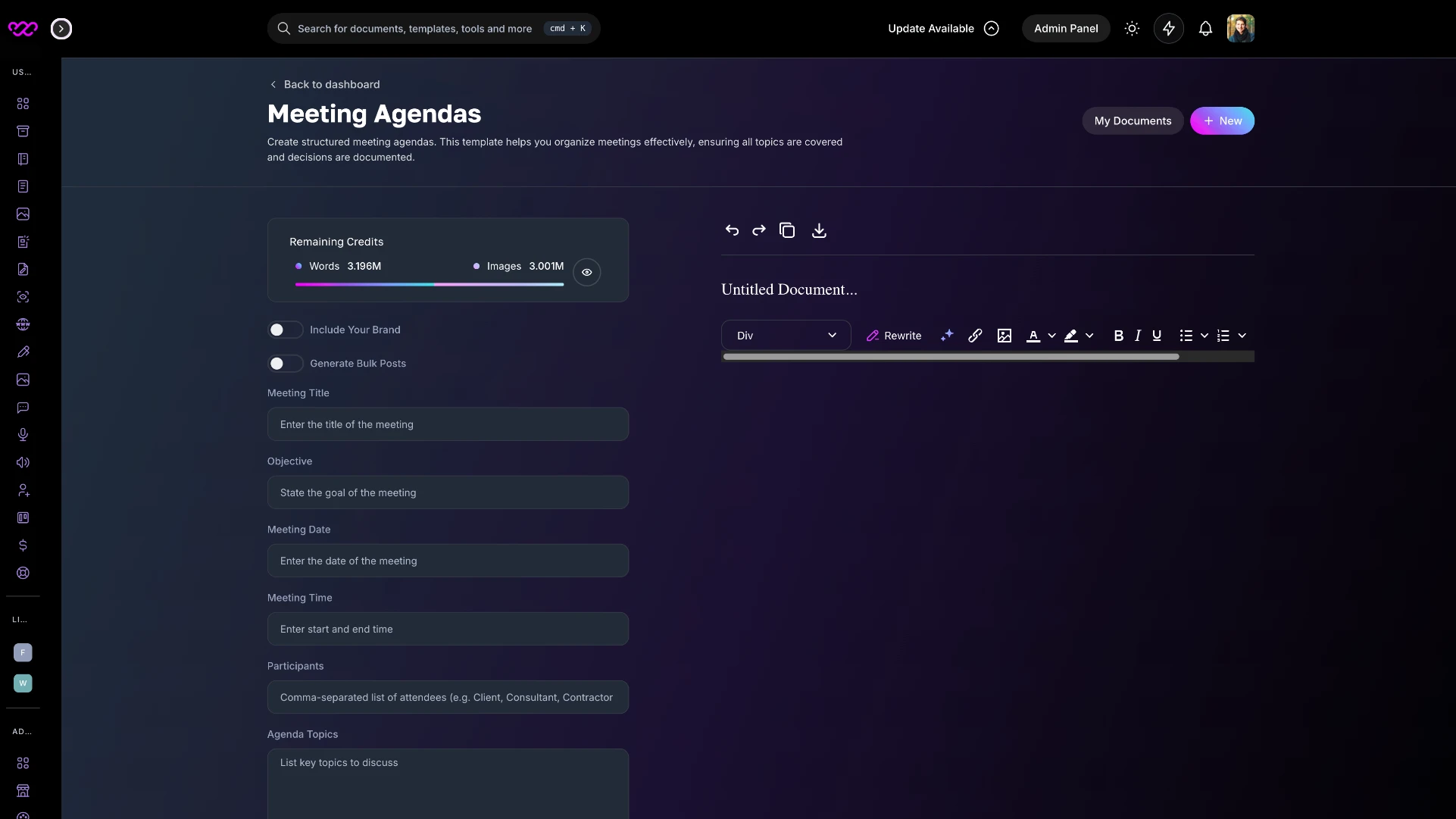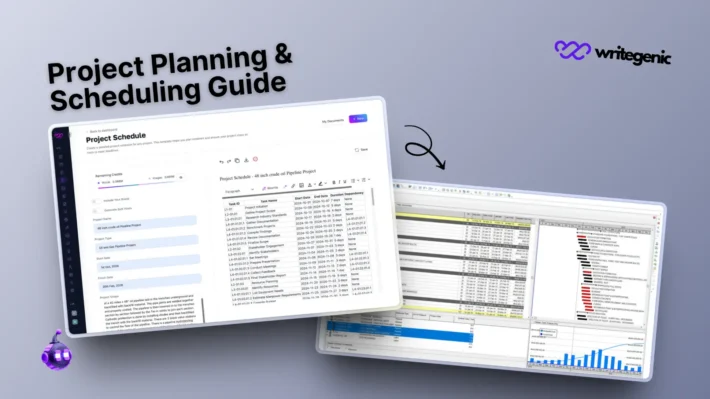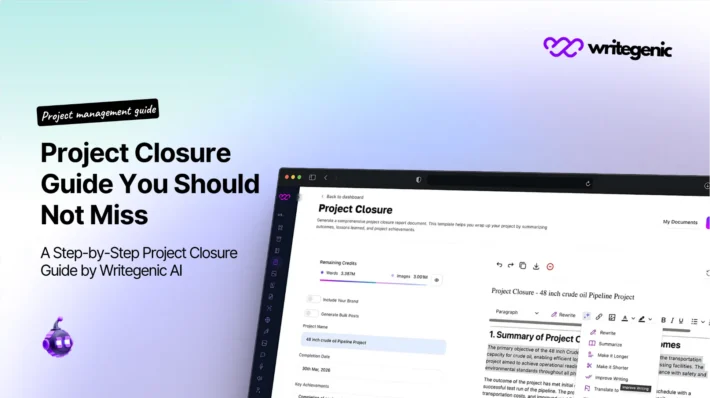How to Plan and Write Effective Meeting Agendas

The writing of a meeting agenda is one of the keys of planning a good meeting. Otherwise, the meetings will soon turn into unproductive and time-consuming affairs with no tangible results. A good agenda keeps people focused, but also contributes to achieving results, encouraging teamwork and providing clarity concerning decisions.
This step-by-step guide will tell you how to write a meeting agenda so that you can run team catch-ups or manage a project meeting with multiple stakeholders more efficiently. Along the way, we shall also look at the most suitable meeting agenda format and give good examples to ease your work.
Table of Contents
What Is a Meeting Agenda?
A meeting agenda refers to an elaborate document of what shall be discussed in a meeting. It plays the role of a strategy that makes sure that all the topics are discussed under the limited time and makes everyone informed and concentrated.
An agenda at its base offers:
- The purpose of the meeting
- A list of topics to discuss
- Time allocations for each topic
- The names of presenters or responsible parties
- A space for notes, outcomes, and next steps
Agendas can be applied to any kind of meeting, whether it is a weekly team check-in or a more challenging project status meeting, or even strategic planning. They indicate expectations even before the meeting is started to provide attendees with advance preparation.

Why Writing an Agenda Matters
You may ask why an agenda is so important to write. Isn’t a meeting a conversation?
Not quite.
This is why an organized meeting agenda is important:
1. Maximizes Productivity
As we all know what to expect, and how people have time to give to each topic at a meeting, the meetings remain focused and outcome-oriented.
2. Keeps the Discussion Goal-Oriented
Apart from preventing distraction, creating a set of the primary objectives beforehand will allow the participants to remain focused on the topic.
3. Encourages Engagement
When their issues or input is reflected on the agenda, participants have the tendency to be more prepared and able to speak out.
4. Creates Accountability
On agendas, ownership of points during discussions is clearly spelt out to ensure that each of us knows what to talk about in that particular meeting.
5. Makes Follow-Up Easier
When discussion points and action items are captured in the form of writing, post-meeting follow-ups are more effective and clear.
To state it briefly, an agenda is an investment in the success of meetings and it will reward you every time you write one.
Meeting Agenda Format: What to Include
The meeting agenda format is the most crucial in meeting planning and maintenance of professionalism and consistency in meeting planning. This is one of the structures you can follow:
Title and Date
Clearly define your convening: e.g., “Marketing Strategy Review Q3 Planning | June 30, 2025”.
Meeting Objective
Write the key objective like “Review the work on the project and unblock tasks” or “Finish the content calendar of Q3.”
List of Attendees
Name who is mandatory or voluntary, and what they do.
Agenda Items
Divide the meeting into some discussion points or major topics. Ensure that every one of your topics makes sense regarding your broad goal.
Time Allocation
Each agenda item should have the allocated time to ensure flow and eliminate overruns.
Topic Owner
Explain who will chair or present every item in an agenda to bring forth a sense of responsibility.
Discussion/Q&A
Towards the end give time to clarification of doubts or open discussion.
Conclusion & Action Items
Conclude by summarising the meeting, decisions, follow up action and ownership of tasks.
How to Plan a Meeting Agenda Step-by-Step
It is simple to write an agenda after dividing it into small steps. There is a built-in way to do it and go step by step:
1. Define the Meeting Purpose
Ask the question: what do we want to happen? Would it require some decisions, new communications, or brainstorming?
Appropriate topics and the effective usage of time are guaranteed by clear goals.
2. Prioritize the Topics
Write down everything you have to cover and then prioritize them either in terms of urgency or priority. Get rid of every single thing that does not contribute to the objective.
3. Organize Topics in a Logical Flow
Consider how naturally conversations can be developed. Begin with updates, continue with decision-making, and end with next steps.
4. Estimate and Assign Time
Designate a reasonable time block to every agenda item. This avoids having conversations that could go out of hand and make the meeting run out of time.
5. Assign Responsibilities
Distribute the items in the agenda to be discussed by a speaker or a topic-owner. This makes the discussions more concentrative and less puzzling.
6. Distribute the Agenda Before the Meeting
At least, send the agenda 24 hours before it, preferably 48. This provides time to other members to study, review, plan, and even propose some other items.
A well distributed agenda also creates an impression that the meeting is a very significant one and worth preparing.
Team Meeting Agenda: Sample Template
Team meetings are critical to alignment, working on updates, and collaboration. The team meeting agenda must be brief, targeted and regularly repeated.
Example: Weekly Team Sync Agenda
Date: Monday, July 1, 2025
Objective: Review current tasks, resolve blockers, and plan for the week.
| Time | Agenda Item | Lead |
| 10:00–10:10 | Quick Announcements | Team Lead |
| 10:10–10:25 | Task Updates | Team Members |
| 10:25–10:35 | Roadblocks or Delays | Project Coordinator |
| 10:35–10:45 | Priority Items for the Week | Product Manager |
| 10:45–11:00 | Q&A and Action Items | All |
This structure is suitable when the marketing department is looking to make a change or when there is a product team or any cross-functional team which requires alignment.
Project Meeting Agenda: Example and Tips
Project meeting agenda is concerned with deliverables, time and performance. Apply this format when it comes to working on continuous projects or important launchings.
Example: Project Status Review Agenda
Project Name: Mobile App Redesign
Objective: Review timeline, discuss blockers, and confirm next sprint priorities
| Time | Agenda Item | Responsible |
| 2:00–2:10 | Project Timeline Recap | Project Manager |
| 2:10–2:25 | Progress on Key Tasks | UI/UX & Dev Teams |
| 2:25–2:40 | Challenges and Risks | QA Lead |
| 2:40–2:50 | Resource Planning | Team Leads |
| 2:50–3:00 | Next Steps & Assignments | Project Manager |
Take good notes and input your project management package right after the meeting.
Tips for Running Meetings with an Agenda
No matter how good an agenda is, no meeting would be well conducted without that agenda. Adhere to the following best practices:
- Pre-release the agenda so that everyone is in line.
- Observe time schedules to avoid the schedules dragging on.
- Stick to the agenda, with the flexibility in minor cases.
- Put a note-taker down- record decisions and action points.
- Wrap up with a summary and follow up confirmation.
Accountability-free meetings are a waste of time to everyone involved. Clarify and own all meetings.
Tools to Help with Meeting Agenda Creation
You need not, it does not have to build agendas again and again. To accelerate the procedure, apply the following tools:
- Google Docs & Microsoft Word – Great for collaborative editing and formatting.
- Notion – Build modular, interactive meeting templates.
- Asana / ClickUp / Trello – Link agenda items directly to tasks and deadlines.
- Writegenic AI – Use AI to generate custom meeting agendas for team and project meetings instantly, based on your meeting objectives. Simply enter required information and Writegenic AI will write an agenda within seconds.

Save time and minimize human error with smart tools and streamline your planning process.
Common Mistakes to Avoid
Agendas are very useful although when used unfairly it becomes a killer agenda. Be alert about the following:
- No clear objective – They have unclear or broad objectives, which results in off-topic discussions.
- Too many topics – Few important things to focus on.
- No assigned speakers – It results in spoilt silence or misunderstanding..
- Failing to follow up – Never allow decisions to slip after a meeting and keep a watch on the things assigned
Conclusion
The agenda is the key to a successful, output oriented meeting. When organizing a short team check-up or a more elaborate project gathering, an agenda will help to organize it, be accountable, and produce some results.
FAQs
What is a meeting agenda and why is it important?
The agenda of a meeting is an itinerary of the topics, goals, and time schedule that should be discussed in a meeting. It makes it easier to stay on-topic, time is spent wisely and participants are better able to prepare the work in advance. Production and decision-making in all forms of meetings are enhanced through writing an agenda.
How is a project meeting agenda different from a general agenda?
An agenda of a project meeting is dedicated to the project progress, deadlines, and risks. It usually involves reviewing tasks, updating, line of progress, and resource scheduling. Contrary to general meetings, project meetings have responsibilities that are strongly linked to a particular deliverables and project milestones.
Can I use templates or tools to write a meeting agenda?
Yes! You can use templates in Google Docs, Microsoft Word, or collaboration tools like Notion, ClickUp, and Trello. AI-powered tools like Writegenic AI also help generate customized agendas quickly, based on your meeting type and goals.
How long should a meeting agenda be?
The agenda of a meeting ought to be short but illustrative enough to discuss all possible issues. One-page agenda would be suitable in the case of short meetings (30-45 minutes). The more detailed agenda with sub-points might be required in case of longer or more complicated meetings (1-2 hours). It has to be concise and clear.


